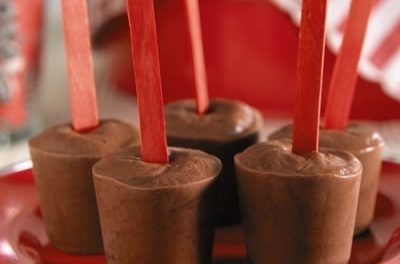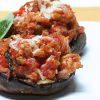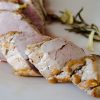"It's not the taste, it's the way the glass looks after you drink it," to paraphrase Shelly Berman, a comedian who nailed the American aversion to buttermilk. Indeed, the thickness and the lacy network it leaves on the inside of the glass are the main reasons people shun this tangy refresher.
On a simmering hot day, nothing beats the bracing chill of a glass of cold buttermilk, but let's not even go there. Rather, think of buttermilk as a versatile � and appealing � ingredient. In fact, it is one you may already like: Buttermilk is essential in authentic, creamy, all-American Ranch Dressing. It adds lively piquancy to cold soups, makes luscious, velvety smoothies and creates tender, cloud-light pancakes.
The word "buttermilk" is, in fact, a misnomer. It contains no butter. It is actually the liquid left after cream is separated out to be churned into butter. One reason people did not like farm-fresh buttermilk was the tiny flakes of butter punctuating it. Today, that is a distant memory. Buttermilk is now cultured in dairy plants, where special bacteria are added. As with yogurt, these friendly organisms convert the milk's sugar into lactic acid, providing the characteristic, tart taste. And, as with yogurt, the change in this sugar means buttermilk can be tolerated by some people who are lactose intolerant.
Most buttermilk, while rich-tasting, contains little or no fat because it is made using low-fat or skim milk. However, some brands of low-fat and fat-free buttermilk are made only from milk and cultures, while others contain gums and other ingredients that are added for thickness and flavor. All are equally healthful, but you may prefer those that are more traditional, so check the label to distinguish the two types.
A friend recently reminisced about a robust, richly vibrant cold beet soup for which she had lost the recipe. We quickly determined that buttermilk was the key ingredient. Few summer soups are easier to make, and more enticing. Its stunning color creates a beautiful, irresistible sight.
Cold Beet Soup
Makes 4 servings.
Ingredients:
- 1 lb. (about 2 medium) beets
- 1 cup low-fat or fat-free buttermilk
- 1/4 cup non-fat plain yogurt
- 2 Tbsp. fresh lemon juice
- Salt and ground white pepper, to taste
- 1/4 cup chopped dill leaves, for garnish
- 2 scallions, green part only, finely chopped, for garnish
Directions:
- Scrub beets well, retaining 1- to 2-inch stems on each. Place in deep pot. Add water to cover. Bring to boil over high heat. Reduce heat, cover and cook until beets are soft when pierced with knife or fork tines, about 40 minutes. Cool beets completely in cooking liquid. Drain, reserving 1/2 cup cooking liquid.
- Using rubber gloves to avoid staining hands, cut away top and bottom of beets, then use fingers to peel. Coarsely chop beets. Place in blender. Add reserved cooking liquid, buttermilk, yogurt and lemon juice. Puree until smooth. Season to taste with salt and pepper.
- Chill soup from 2 hours to overnight. Adjust seasoning and divide among 4 shallow soup bowls. Garnish each with one-quarter of dill and scallions and serve.
- This soup keeps in refrigerator, tightly covered, for 3 days.
Nutritional Information Per Serving:
68 calories,
less than 1 g. fat (less than 1 g. saturated fat),
12 g. carbohydrate,
4 g. protein,
2 g. dietary fiber,
133 mg. sodium.
Diabetic Exchanges: 1 Non-Fat Milk
0
AICR






